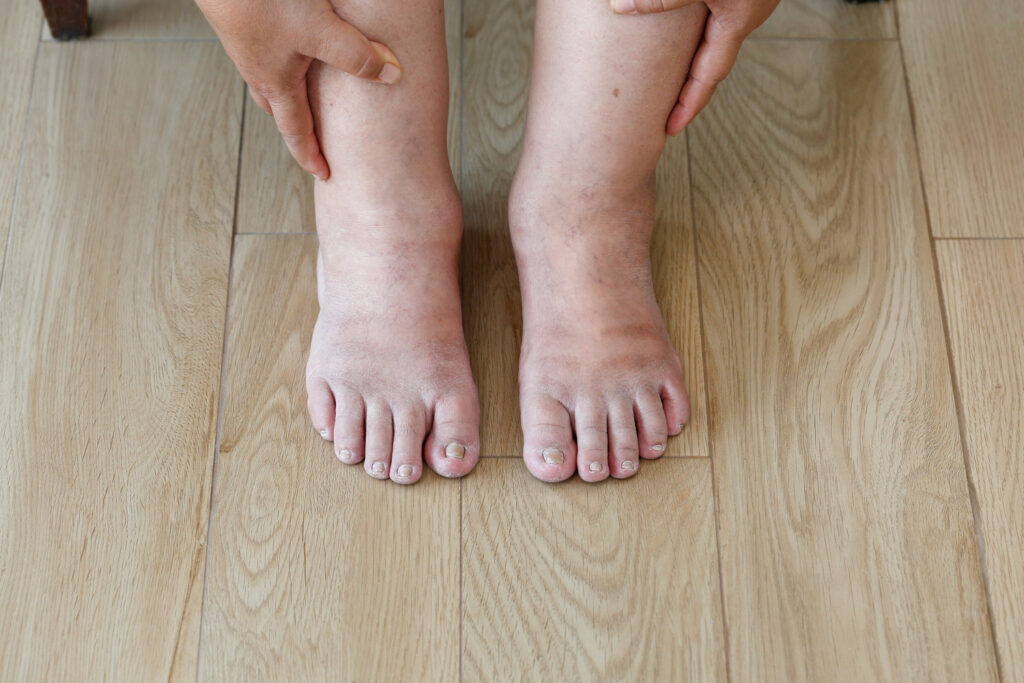
Edema is a phenomenon caused by the imbalance of fluid in the body. It occurs when there is an excessive accumulation of fluid in the interstitial spaces or blood vessels, leading to enlargement of the body tissues and compression of surrounding tissues. It is a common clinical symptom characterized by visible depressions when pressing on the subcutaneous tissues in areas with less fluid accumulation.
Edema can occur in various parts of the body, including the fingers, ankles, dorsum of the feet, legs, abdomen, and eyelids.
Below are detailed descriptions of some common causes of edema:

1. Cardiogenic Edema:
Heart disease is one of the most common causes of edema. Various diseases can impair the heart’s pumping function, leading to reduced cardiac output, poor venous return, and manifestations of heart failure, resulting in significant body edema. It is characterized by initial swelling in the lower limbs, which worsens after activity and alleviates after rest. Pressing on the swollen area will result in visible depressions.

2. Renal Edema:
The kidneys are the main organs responsible for excreting fluids and waste from the body. When the kidneys are affected by disease, it disrupts the balance of fluids and electrolytes in the body, resulting in generalized edema. Kidney disease can cause edema in the early stages. Characteristically, edema is most pronounced in the morning upon waking and gradually diminishes after activity. Edema typically begins in the eyelids and face before spreading to the entire body. Common manifestations include urinary obstruction, hypertension, or kidney damage.

3. Hepatic Edema:
Hepatic disease is a condition caused by abnormal liver function. When the liver loses its normal function, it leads to the accumulation of toxins and waste in the body, resulting in edema. The main mechanism of hepatic edema is the abnormal liver function leading to reduced bile secretion, decreased synthesis of liver proteins, inadequate plasma protein synthesis, etc., causing generalized edema. It is primarily manifested as ascites, initially appearing as swelling in the ankles or legs and gradually progressing upwards. It is often accompanied by jaundice, hepatosplenomegaly, spider angiomas, and abdominal wall varices.
4. Lymphatic System Issues:
The lymphatic system is an important system for maintaining fluid circulation and waste excretion in the body. When there are issues with the lymphatic system, such as lymphatic vessel blockages or damage to lymphatic tissues, fluid drainage is obstructed, leading to edema.

5. Pregnancy:
During pregnancy, hormonal changes can lead to fluid retention in the body, especially in the later stages of pregnancy. The enlargement of the uterus during pregnancy also puts pressure on the abdomen, increasing resistance to venous return and resulting in edema.
6. Idiopathic Edema:
Some women aged 20 to 40 may experience mild swelling of the eyelids and face upon waking in the morning, along with pitting edema or a feeling of tightness in the lower limbs. With activity, the swelling gradually diminishes. Most researchers believe it is related to neuro-psychological factors and dysfunction of the autonomic nervous system.
7. Positional Edema:
Prolonged standing, walking, squatting, or sitting can cause edema due to blockage and accumulation of blood in the lower limbs. After changing positions for a period of time, the edema can self-reduce or disappear.
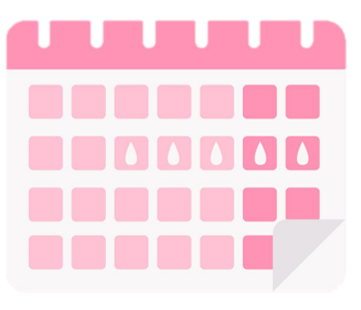
8. Premenstrual Edema:
Some healthy women experience mild swelling of the eyelids, back of the hands, ankles, or even both lower limbs, as well as symptoms such as irritability, insomnia, fatigue, and headache in the week or half-month before menstruation. The edema and other symptoms gradually diminish with the onset of menstruation.
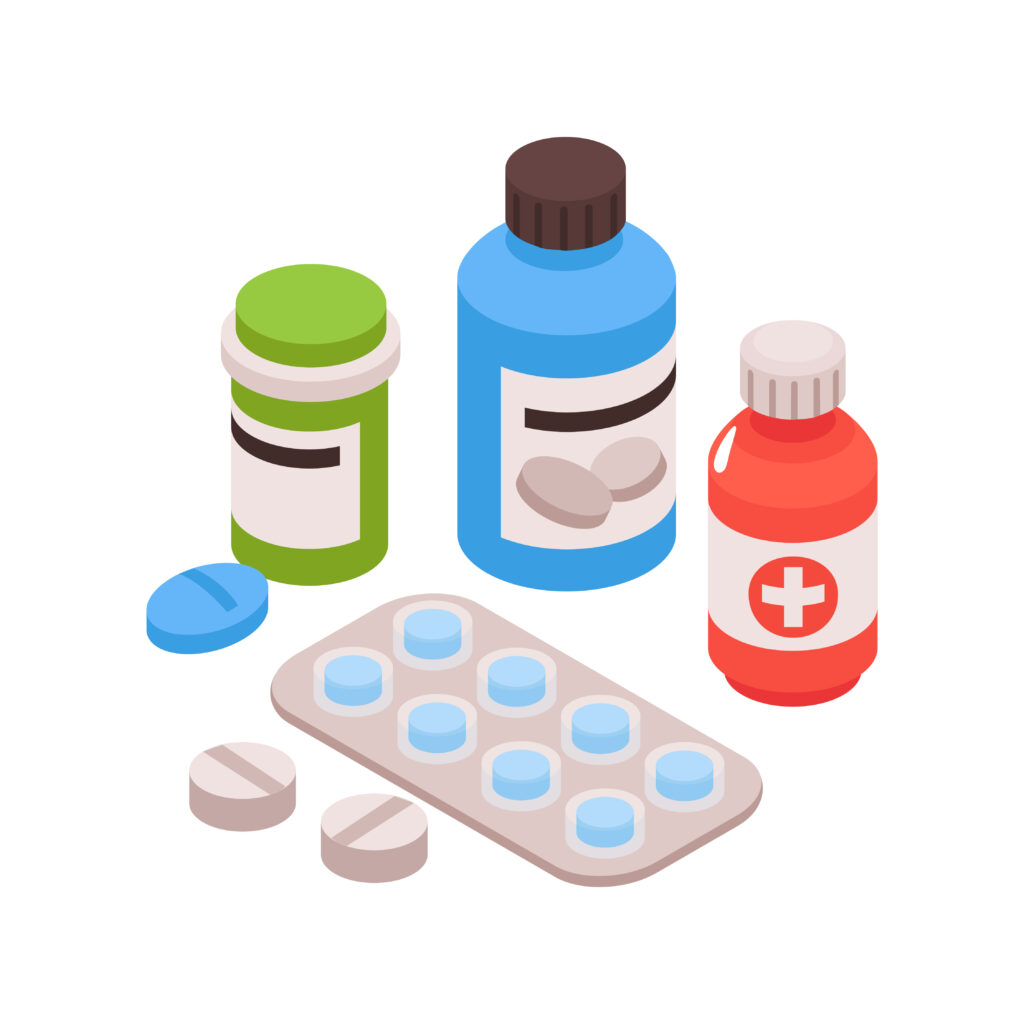
9. Drug-Induced Edema:
The use of corticosteroids, testosterone, androgens, insulin, sulfonylureas, licorice, and other drugs can cause swelling in the face, hands, and feet. The edema gradually subsides after discontinuation of the medication.
How to Reduce Edema

1. Take a 20-minute soak bath every day:
Soak bathing can dilate peripheral blood vessels, increase the force squeezing the vessels, enhance the venous return of blood, and prevent excess water from accumulating at the extremities. Additionally, soak bathing can stimulate the right atrium of the heart to secrete atrial natriuretic peptide, further reducing edema. Of course, soak bathing also aids in lymphatic drainage at the extremities, increases metabolism, and prevents stasis. Soak bathing in warm water at 38-42°C for 20 minutes daily can also help burn fat.
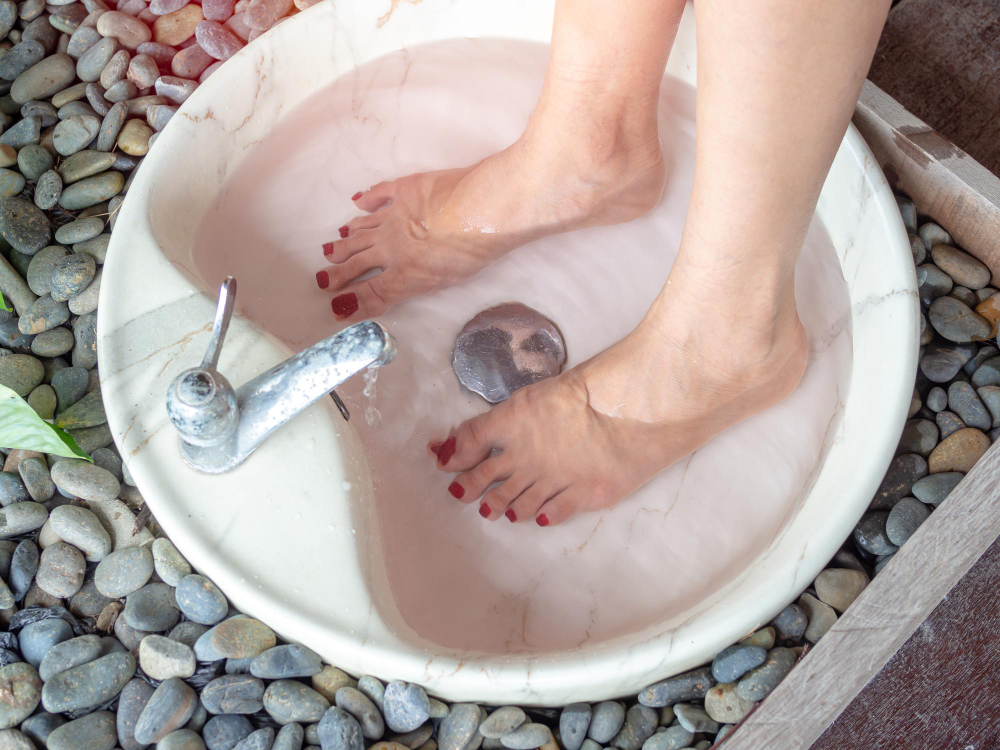
2. Soak your feet for 20 minutes at night:
If you’re unable to take a full-body bath, you can opt for foot soaking instead. Soak your feet in water at 40-42°C for 20 minutes to stimulate peripheral nerves, improve circulation in the lower body, and reduce swelling using osmotic pressure. When soaking your feet, ensure that the water level is higher than your ankles, preferably reaching the calf. You can also place smooth pebbles in the foot bath and massage your soles while soaking to promote meridian circulation. Alternatively, you can add grated ginger to the foot bath to induce sweating and help eliminate excess water from the body, preventing accumulation.
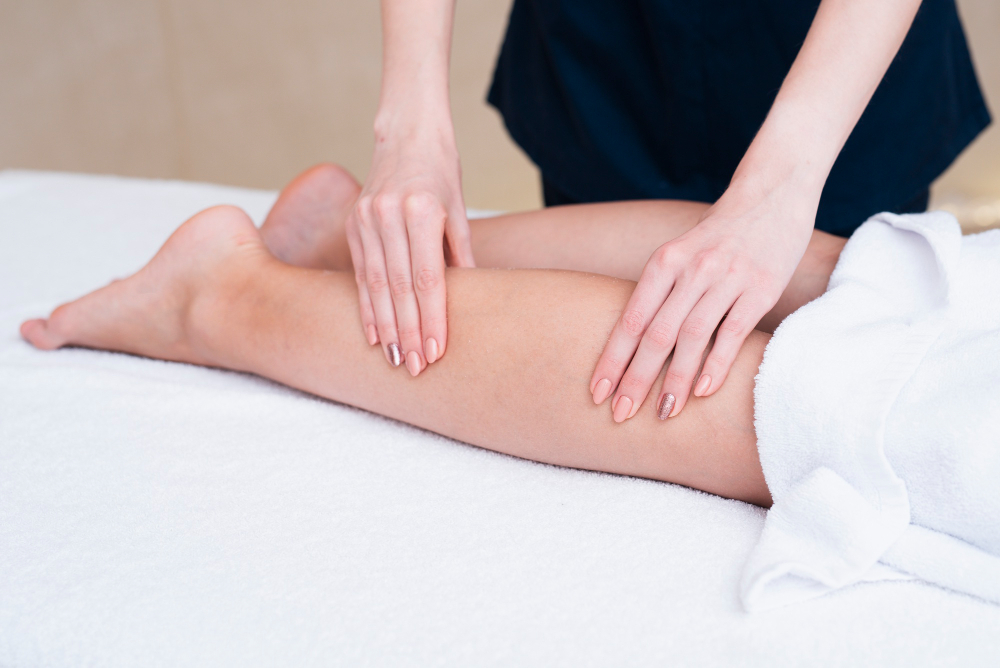
3. Massage the Lower Body:
After bathing, apply lotion to the entire body to lock in moisture and help moisturize the skin. While applying lotion, massage the limbs to alleviate fatigue and swelling accumulated throughout the day. 1) Sit down and elevate your legs. With both hands, gently press from the base of the thighs to the knees five times, then gently press from the calves to the ankles five times, and finally gently press back to the base of the thighs. 2) Use your fingers to gently press the ankles and slowly press to the calves five times. 3) Wrap your palms around the soles of your feet and press back and forth five times. 4) With both hands, encircle the calves and slowly press upwards to the thighs five times.
4. Elevate Your Feet:
When sleeping at night, you can place a pillow under your feet to slightly elevate them. This can help the blood and lymph fluid pooled in the feet flow back towards the heart, relieving swelling caused by standing all day.
What to Eat to Reduce Edema
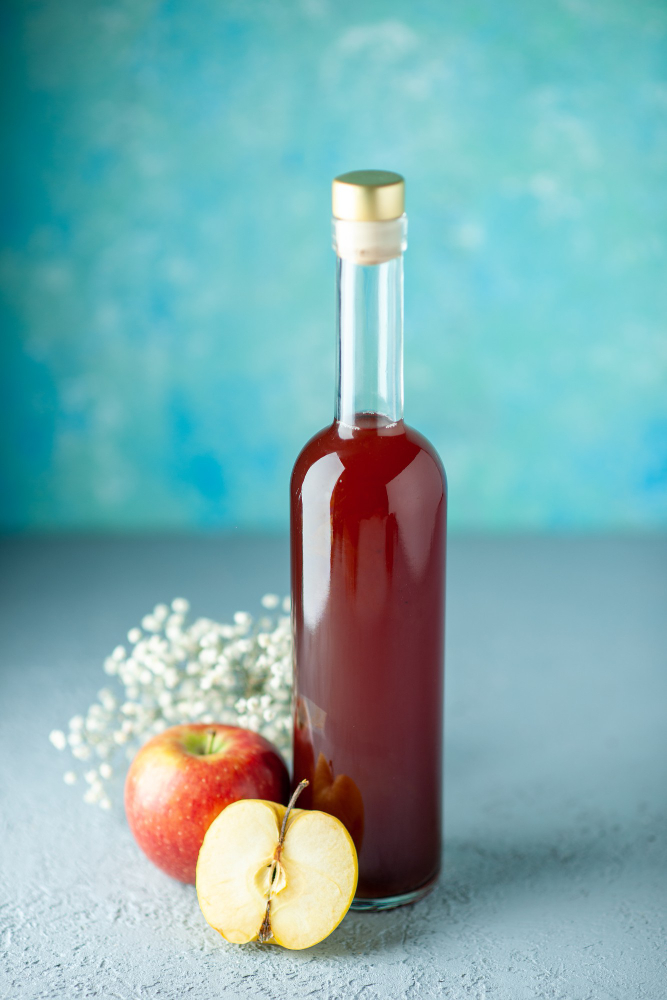
1. Apple Cider Vinegar
The pectin in apple cider vinegar promotes intestinal peristalsis and has an acidifying effect. Alkaline body conditions are prone to edema, but using apple cider vinegar helps balance the body’s pH levels. It not only reduces swelling and promotes diuresis but also aids in weight loss.
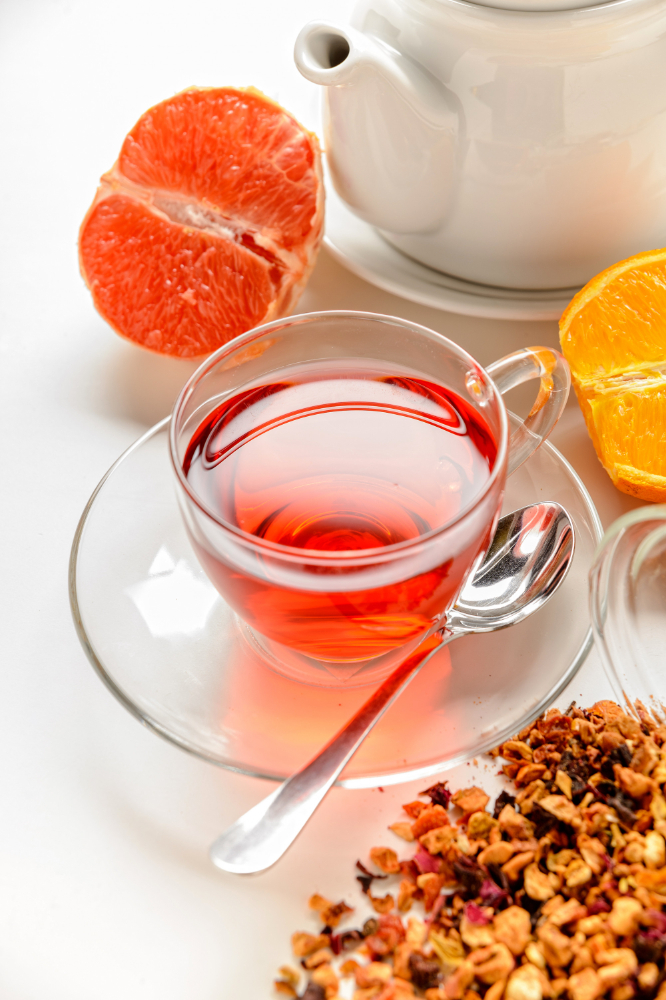
2. Grapefruit Tea
Grapefruit tea is an excellent weight loss beverage with low calories that helps eliminate edema and remove excess water. Depending on preference, you can also add a moderate amount of honey to enhance detoxification and intestinal lubrication effects.
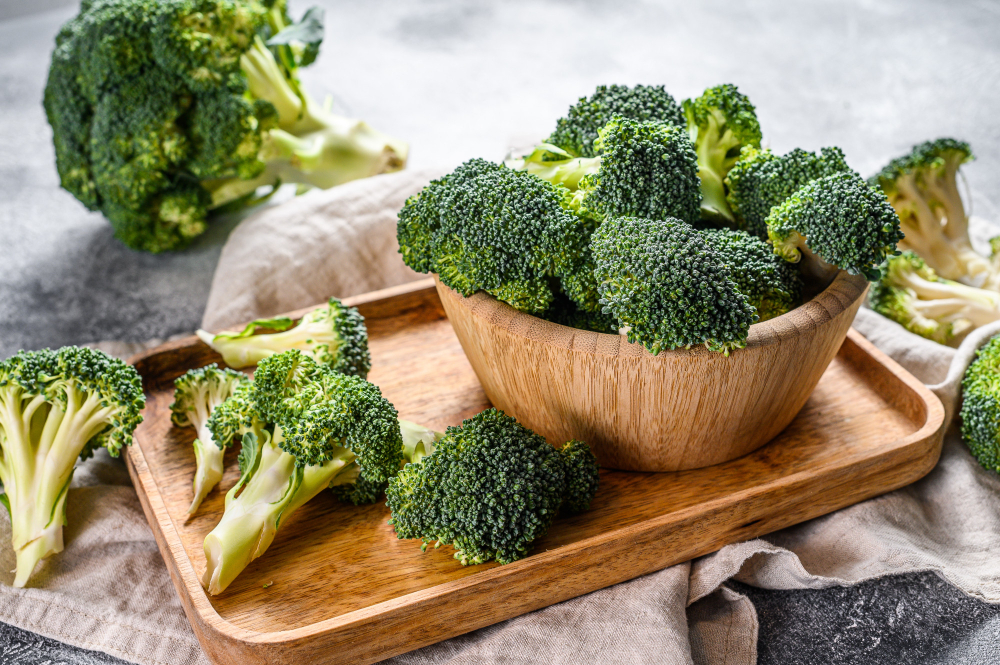
3. Broccoli
The vitamin C in broccoli promotes the health of capillaries, alleviating edema. It also helps prevent constipation. Consuming broccoli with eggs or meat enhances its diuretic effect.
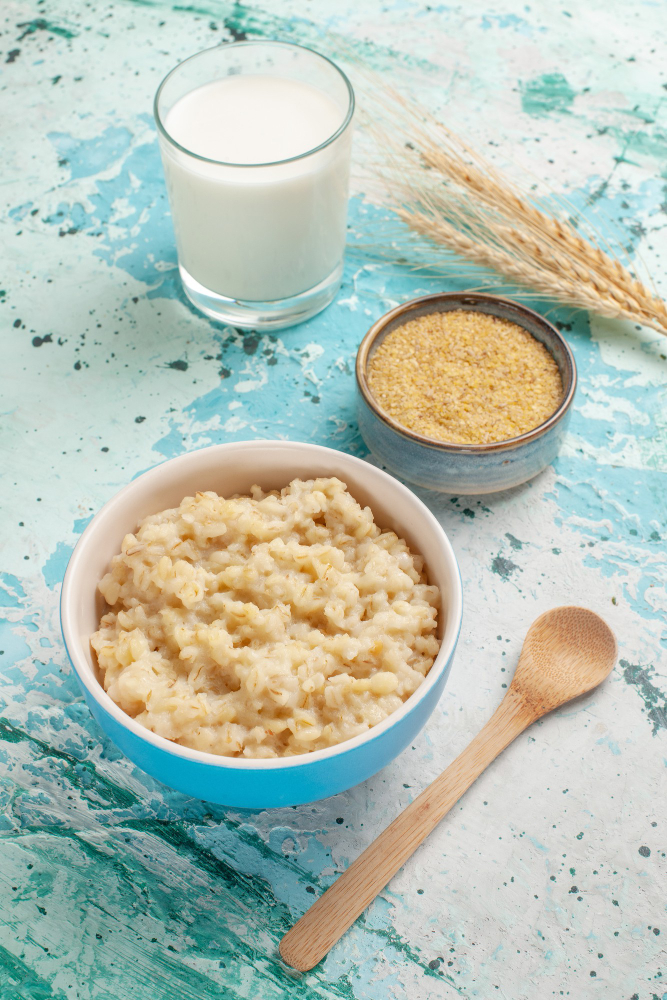
4. Oatmeal Porridge
The abundant fiber in oatmeal increases satiety and lowers blood lipids, making it highly effective in reducing edema. Cooking it into oatmeal porridge not only provides rich nutrition but also aids in weight loss.
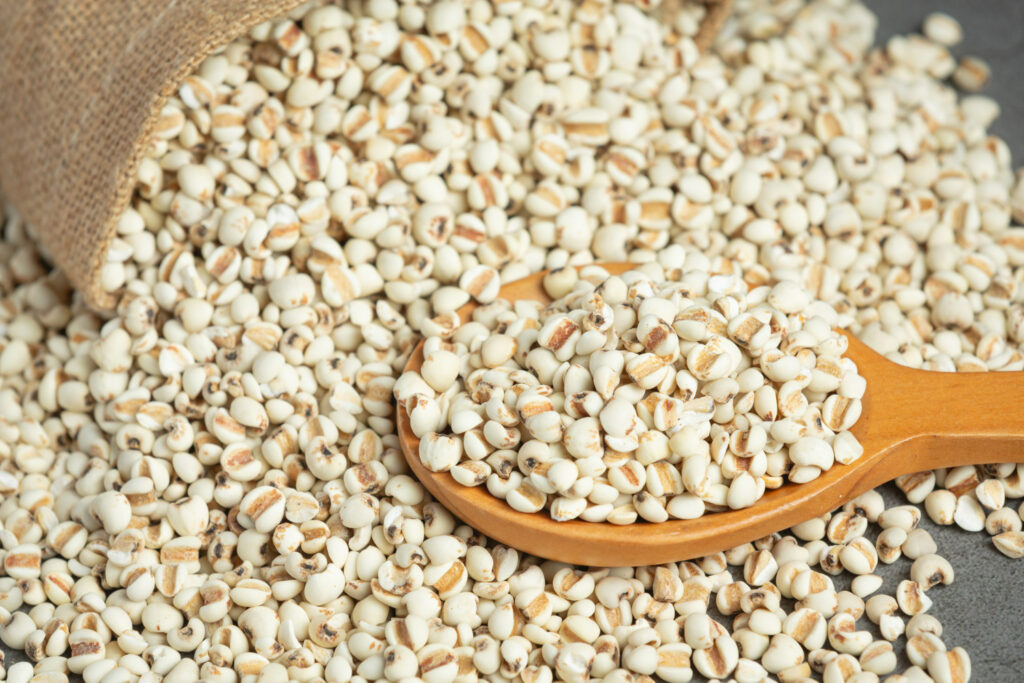
5. Job’s Tears (Coix Seeds)
Job’s tears promote metabolism and blood circulation, effectively eliminating edema and helping to remove excess water from the body. Therefore, moderate consumption of Job’s tears not only aids in weight loss but also promotes diuresis and health.
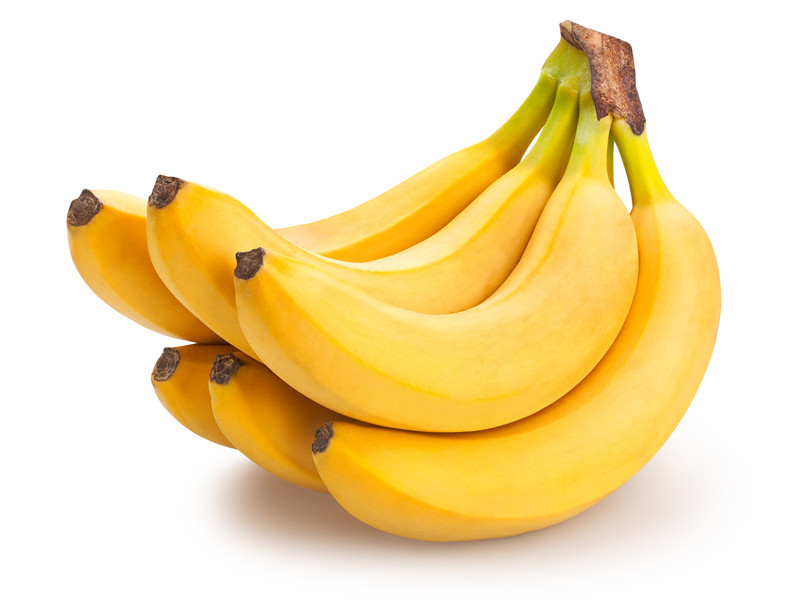
6. Banana
Bananas are excellent for weight loss as they are rich in potassium, which helps the body eliminate excess water and moisturizes the skin. They also aid digestion and prevent edema.
The above methods and dietary suggestions are effective for physiological edema and mild edema. If edema is severe or accompanied by other discomfort symptoms, please consult a professional physician or visit a hospital.
此文章还有以下语言版本:
![]() 简体中文 (Chinese (Simplified))
简体中文 (Chinese (Simplified))



